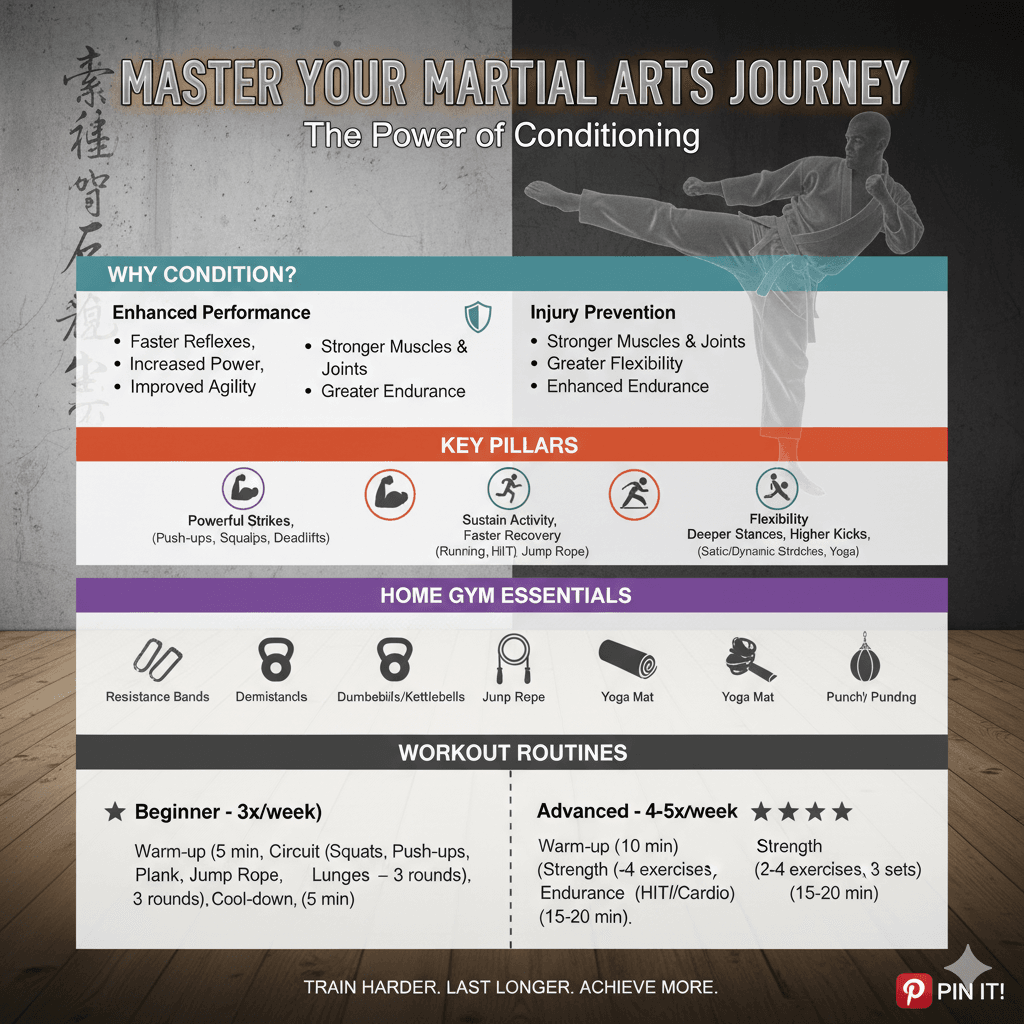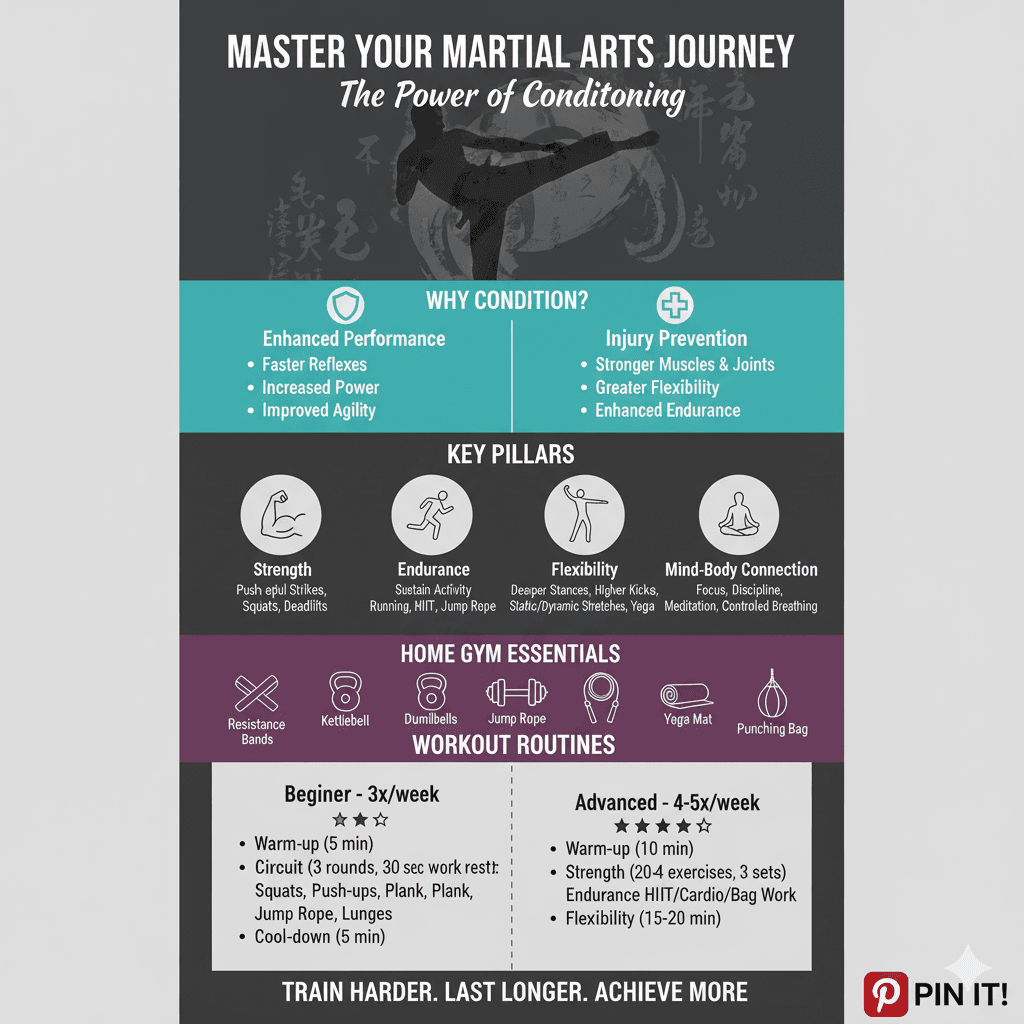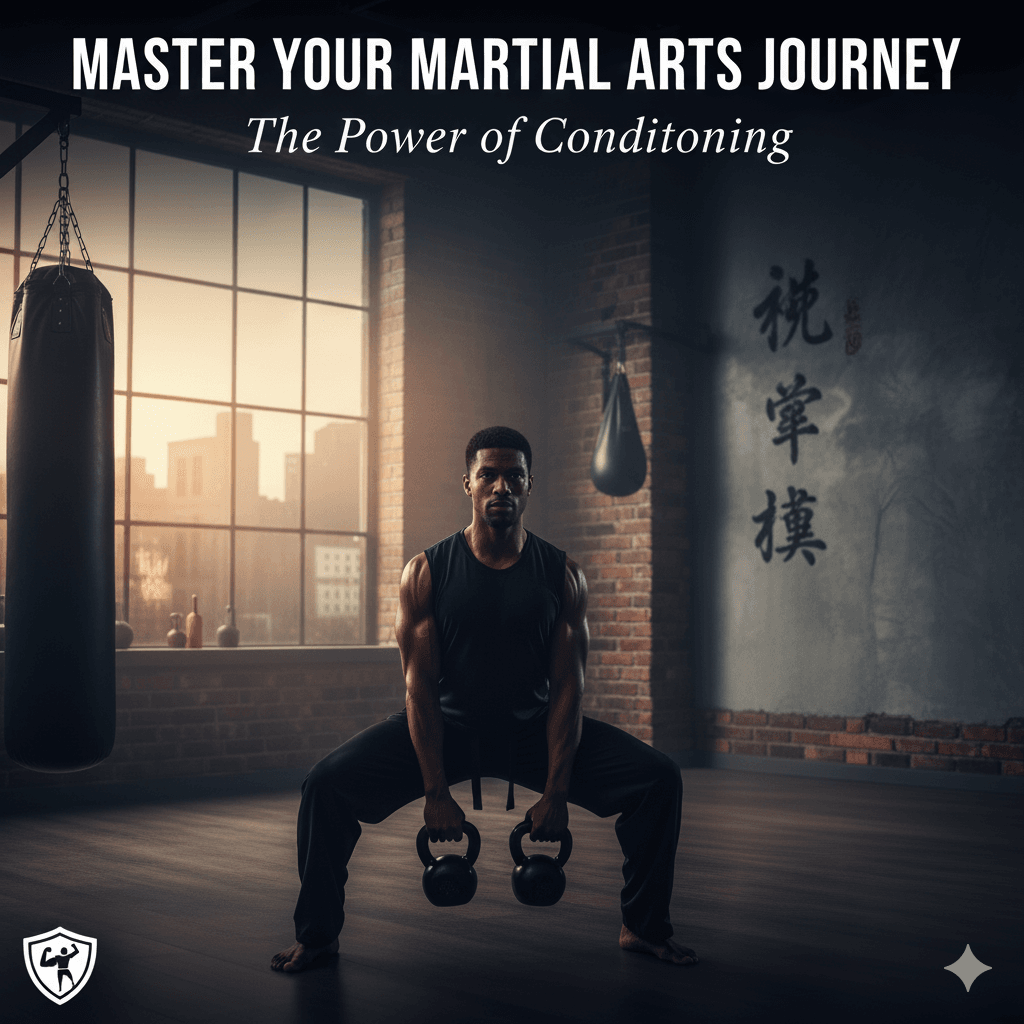Physical conditioning plays a crucial role in martial arts training, as it directly impacts an individual’s performance across various disciplines.
Strength, endurance, and flexibility are fundamental elements of martial arts that can significantly influence a practitioner’s ability to excel.
Through consistent conditioning, martial artists can build the necessary muscle groups, enhance cardiovascular health, and improve joint flexibility, all of which contribute to superior performance in their respective styles.
Enhanced strength allows martial artists to execute techniques more powerfully, while improved endurance ensures they can maintain efficiency throughout rigorous training sessions or competitions.
Flexibility is equally vital, as it not only facilitates the execution of complex movements but also reduces the risk of injury.
A well-conditioned body helps combat fatigue, allowing martial artists to train harder and recover more effectively.
In addition to performance, conditioning plays a key role in preventing injuries.
A body that is conditioned for martial arts training can better absorb impacts and withstand the physical stresses of various techniques.
This prevention is particularly paramount in combat sports, where unexpected movements can lead to strains or sprains.
Regular conditioning routines can strengthen muscles, ligaments, and tendons, providing a more resilient physical structure.
Despite the focus on conditioning, it is essential to strike a balance between skill training and physical conditioning.
While honing techniques is vital, neglecting conditioning can lead to subpar performance and increased injury risks.
Integrating conditioning into regular training routines ensures that martial artists develop not only technical skills but also the physical components necessary for skill execution.
In conclusion, conditioning is an indispensable aspect of martial arts training, contributing to improved performance and injury prevention.
A well-rounded approach that includes both skill and conditioning will ultimately shape a well-prepared and adept martial artist.

Key Conditioning Equipment for Home Gyms
When setting up a home gym tailored for martial arts, incorporating effective conditioning equipment is crucial.
The right tools not only enhance physical performance but also ensure comprehensive training.
Here are some essential pieces of equipment specifically geared towards martial arts conditioning.
Resistance Bands are versatile tools that can significantly improve strength, flexibility, and endurance.
They offer a range of resistance levels, making them suitable for various exercises.
Common practices include lateral leg lifts, shoulder presses, and as assistance during pull-ups.
Resistance bands are particularly beneficial for martial artists as they mimic the resistance faced during actual combat.
Punching Bags come in various forms, including heavy bags, speed bags, and double-end bags.
Each type provides unique training benefits.
Heavy bags are excellent for developing striking power and technique, while speed bags enhance hand-eye coordination and speed.
Additionally, double-end bags cultivate timing and precision in strikes.
Regular use of a punching bag can sharpen a martial artist’s skills significantly.
Kettlebells are ideal for building full-body strength and enhancing anaerobic conditioning.
With their unique shape, kettlebells facilitate a variety of dynamic movements.
Exercises such as kettlebell swings, Turkish get-ups, and snatches can transform training routines to develop explosive power essential for martial arts techniques.
Agility Ladders are invaluable for improving footwork, speed, and coordination.
Effective in drills focusing on quick lateral movements and sprinting, agility ladders benefit martial artists by enhancing their overall mobility and reaction time in a competitive setting.
These ladders can be used in various patterns to keep workouts engaging and challenging.
Lastly, Medicine Balls are beneficial for core strength training, a vital component for stability and explosiveness in martial arts.
Exercises like medicine ball slams, throws, and rotational twists engage multiple muscle groups simultaneously, thereby promoting functional strength relevant to martial arts.
Considering the unique demands of martial arts, incorporating these key pieces of conditioning equipment into a home gym can significantly enhance overall training effectiveness.
Creating a Functional Home Gym Space for Martial Arts Conditioning
Establishing an efficient home gym for martial arts conditioning requires thoughtful planning and strategic organization of both space and equipment.
The first step is identifying a suitable area within your home that provides sufficient room for movement and the installation of necessary conditioning equipment.
Ideally, the space should be quiet and free from interruptions to enable focused training sessions.
Whether it is a spare room, basement, or garage, ensure that the chosen area allows for exercises requiring various movements such as kicks, strikes, and agility drills.

Once a space is selected, maximizing the available area becomes essential.
This may involve clearing away clutter and rearranging furniture to create an unobstructed training zone.
Utilizing wall space for storage solutions such as shelves for smaller equipment and hooks for hanging items like punching bags or focus mitts is an effective strategy.
Additionally, consider using foldable or multi-functional equipment, which helps to save space when not in use while still providing a robust conditioning regimen.
A well-organized gym is crucial for a productive training experience.
Placing frequently used equipment within easy reach and establishing a designated spot for each item promotes efficiency.
It eliminates distractions and fosters an environment conducive to practicing martial arts.
Moreover, ensuring a safe training environment cannot be overlooked; incorporating high-quality flooring, such as mats or rubber flooring, reduces the risk of injury during intense workouts.
Finally, implementing a structured training routine that leverages the chosen martial arts conditioning equipment is vital.
This routine should encompass a blend of strength, endurance, and flexibility exercises tailored to the practitioner’s specific needs.
By following these guidelines, you can create a functional home gym space that greatly enhances your martial arts conditioning efforts.
Sample Conditioning Workouts Combining Equipment
Utilizing a diverse array of conditioning equipment in your home gym can greatly enhance your martial arts performance.
Below are sample workout routines designed for different skill levels, incorporating various equipment such as resistance bands, kettlebells, and jump ropes.
These routines emphasize functional movements that target strength, agility, flexibility, and cardiovascular fitness.
Beginner Routine: This routine focuses on building foundational strength and improving cardiovascular fitness.
Start with 20 minutes of jump rope to elevate your heart rate.
Follow this with three sets of 10 kettlebell swings, focusing on hip hinge mechanics to develop the posterior chain.
Incorporate resistance band exercises with 3 sets of 12 banded squats to enhance leg strength.
Conclude with a cooldown of light stretching, emphasizing flexibility.
Intermediate Routine: For individuals ready to level up, this routine introduces variations and intensity.
Begin with 5 minutes of jump rope intervals, alternating between moderate and high speeds.
Incorporate a circuit of 3 rounds consisting of 10 kettlebell goblet squats, 10 push-ups, and 10 resistance band rows.
Finish with a 5-minute high-intensity interval (HIIT) routine, performing 30 seconds of intense effort followed by 30 seconds of rest for exercises such as burpees or mountain climbers.
Advanced Routine: Advanced practitioners should focus on advanced techniques and combinations.
Start with 10 minutes of speed jump rope, implementing double unders for increased intensity.
Perform a complex circuit featuring 5 rounds of 15 kettlebell snatches, 15 plyometric push-ups, and 15 resistance band overhead presses.
Incorporating active recovery between sets, such as high knees or lateral shuffles, can enhance agility.
The workout should end with dynamic stretching to promote flexibility.
It is crucial to track your progress and adjust your workouts regularly.
Documenting parameters such as repetitions, sets, and duration can help identify areas requiring improvement.
As you adapt to different routines, introducing new variations will prevent plateaus and maintain motivation.
.





